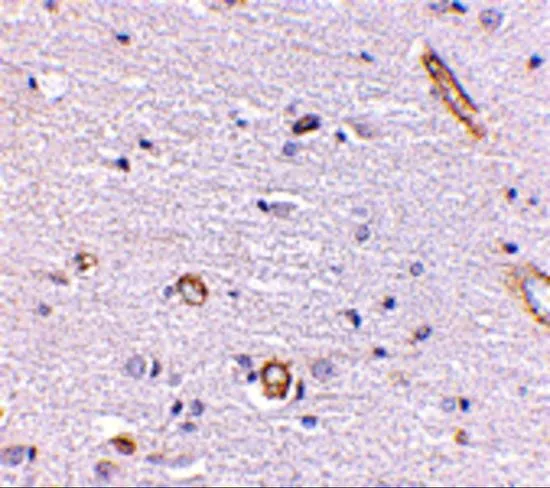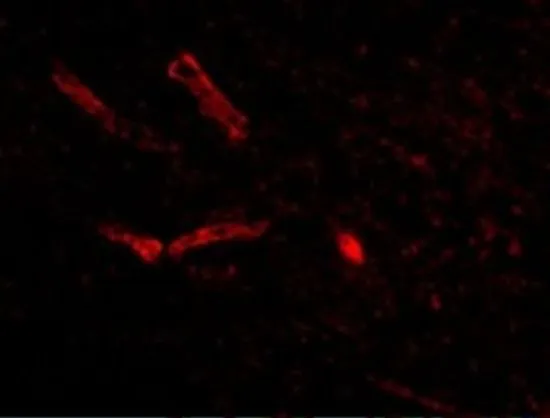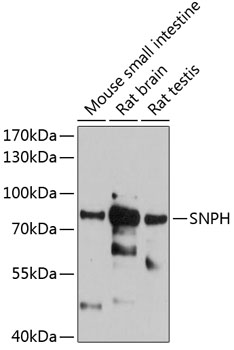
IHC-P analysis of human brain tissue using GTX85393 Syntaphilin antibody. Working concentration : 5 microg/ml
Syntaphilin antibody
GTX85393
ApplicationsWestern Blot, ELISA, ImmunoHistoChemistry, ImmunoHistoChemistry Paraffin
Product group Antibodies
TargetSNPH
Overview
- SupplierGeneTex
- Product NameSyntaphilin antibody
- Delivery Days Customer9
- Application Supplier NoteWB: 1 - 2 microg/mL. IHC-P: 5 microg/mL. *Optimal dilutions/concentrations should be determined by the researcher.Not tested in other applications.
- ApplicationsWestern Blot, ELISA, ImmunoHistoChemistry, ImmunoHistoChemistry Paraffin
- CertificationResearch Use Only
- ClonalityPolyclonal
- Concentration1 mg/ml
- ConjugateUnconjugated
- Gene ID9751
- Target nameSNPH
- Target descriptionsyntaphilin
- Target synonymssyntaphilin
- HostRabbit
- IsotypeIgG
- Protein IDO15079
- Protein NameSyntaphilin
- Scientific DescriptionSyntaphilin was initially identified in a yeast two-hybrid screen with the carboxy terminal region of Syntaxin-1 as bait. Syntaxin-1 is a key component of the synaptic vesicle docking machinery that forms the SNARE complex with synaptobrevin and SNAP-25. Syntaphilin competes with SNAP-25 for binding to syntaxin-1 and inhibits the formation of the SNARE complex, thereby potentially regulating synaptic vesicle exocytosis. Syntaphilin also binds dynamin-1 and inhibits dynamin-dependent endocytosis. Mice lacking syntaphilin show an increased level of mitochondrial motility and a reduced density of axonal mitochondria. This correlates with an enhanced short-term facilitation and significant impairments in motor ability, suggesting syntaphilin plays a major role in presynaptic function. Despite its predicted molecular weight, Syntaphilin usually migrates at higher molecular weight in SDS-PAGE. Multiple isoforms are known to exist.
- Storage Instruction-20°C or -80°C,2°C to 8°C
- UNSPSC12352203








